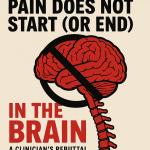Like millions of other women, I have been using gel nail polish for years and love the fact that it leaves my nails super shiny and lasts for weeks.
Harm Reduction
While stem cell research once promised groundbreaking medical treatments, the lack of a regulatory framework has allowed a predatory wellness industry to market unproven and dangerous stem cell therapies as cure-alls. In the l
Sanjay Gupta’s new book, It Doesn’t Have to Hurt
Join Cameron English, Dr. Chuck Dinerstein and Dr. Jeff Singer on Episode 133 of the Science Dispatch podcast as they tackle drug legalization.
“Eat until you are eight-tenths full, drink until you are ten-tenths full.”
- Confucius
Acetaminophen has long been considered the safest option for pain and fever relief during pregnancy, but new research suggests its widespread use may carry hidden risks.
The wellness world’s latest fixation is glucose spikes. Influencers like Jessie Inchauspé, aka the Glucose Goddess, have convinced millions that flattening blood sugar “curves” is key to optimal health.
In music, call-and-response is one of the oldest and most universal forms of communication. In gospel music, the leader sings a line—“Oh happy day”—and the choir answers, their voices rising in harmony.
In January, Andrea Love and I co-authored an article on the then-incoming Trump administration’s












